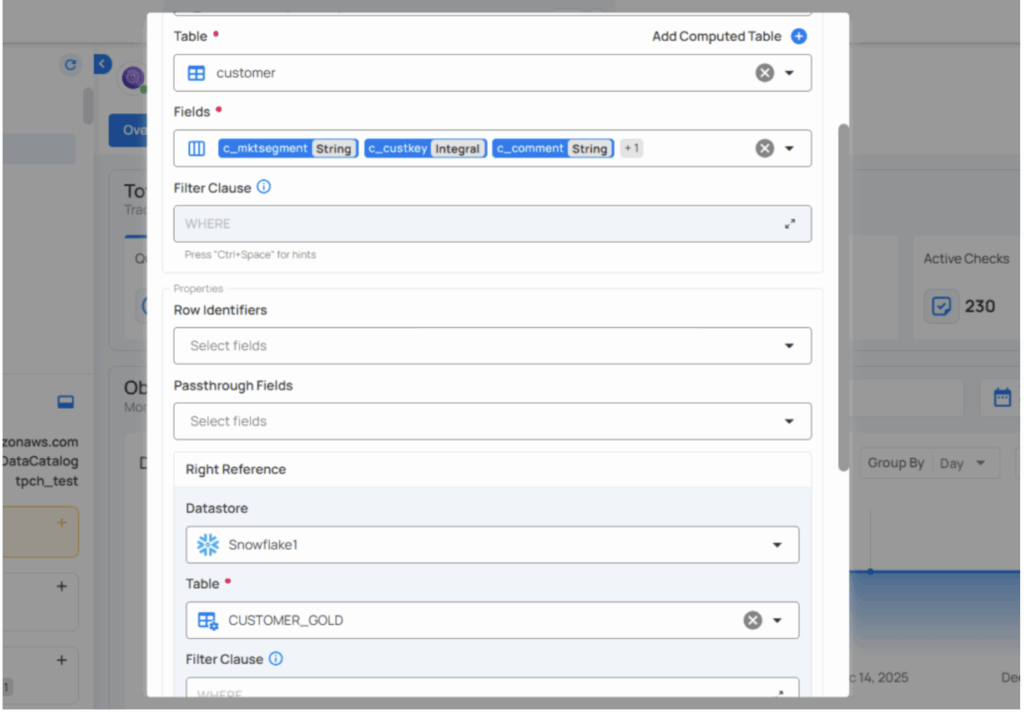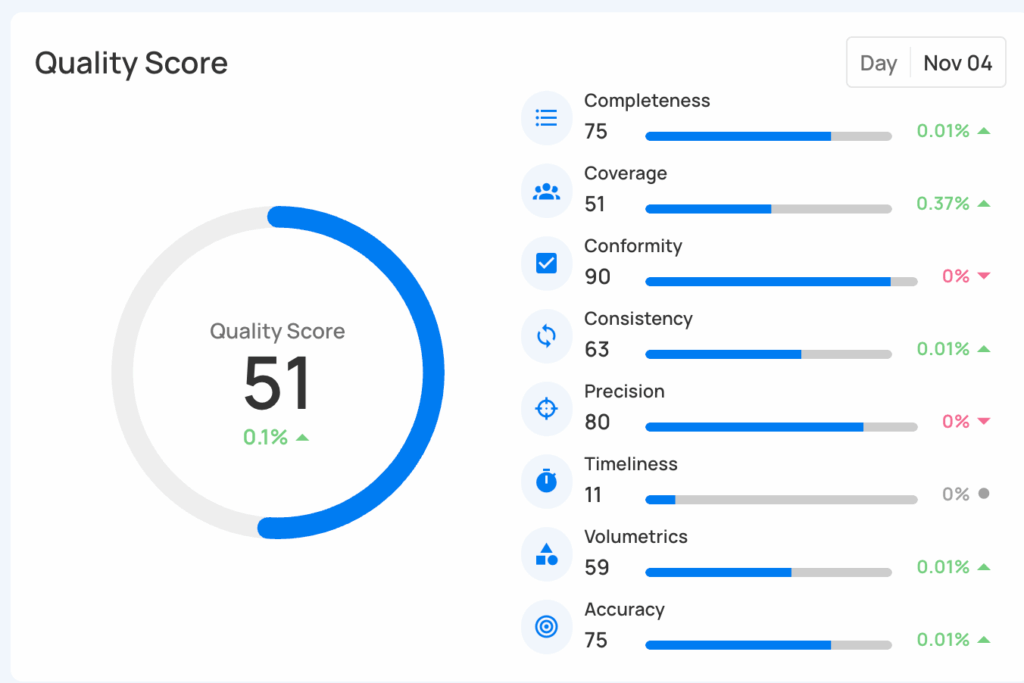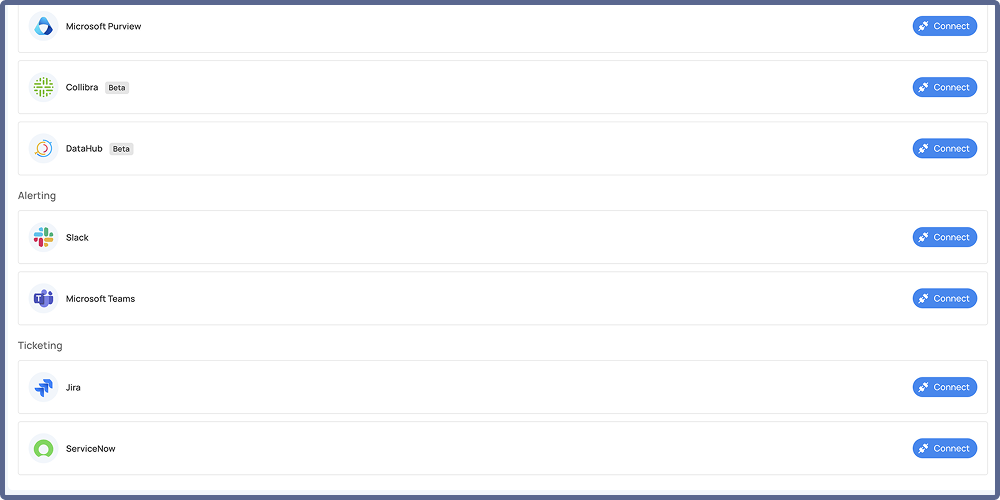As AI and ML start to take the center stage of driving corporate innovation, data management has transformed from an afterthought to a strategic priority. The quality of insights from any AI solution heavily depends on the quality of the data it is trained on. Deriving previously unknown insights means that humans are further removed from the traditional muscle-memory gut checks of spikes and errors in data, and these new insights can easily end with making bad decisions based on bad insights from bad data.
Companies that have focused on their data foundations early and have a robust data governance framework are setting themselves up for short and long-term success. Getting your data AI-ready isn’t just about making data available to a model; it’s about making sure your data is accurate, timely, contextually relevant, precise and accurate. Only then, we can build trust on the amazing insights any AI technology can enable us to do better.
In this whitepaper, we’ll dig into why top-notch data quality is a must as part of a comprehensive AI strategy. We’ll break eight actionable steps to get your data AI-ready, and share tips on how to get your entire team on board.
Why Clean, Trustworthy Data is Crucial for AI Implementation
Certain industries are faster to adopt AI than others. Have you stopped and thought why? Is Cyber security that much more evolved and ready to adopt cutting edge technologies than finserv? Or is it something else?
When we double click on industry-specifics, it’s a revelation to realize that those adopting AI are able to do so because they have trustworthy data. In the cyber example, machine-generated log files are generally structured, do not go through many transformations, do not have human input, and ultimately end up being less anomalous.
However, the analytics space in any industry is different. We have noisy data, we have a ton of data from many sources that have human and machine generated data, we put data through many movements and transformations before ultimately being able to feed into any BI, AI or ML tool.
Let’s distill this down to a playbook for best practices:
7 Critical Steps to Prepare Your Data for AI
From centralizing your data to empowering your team, each of the following steps highlight best practices and key aspects of data management at scale.
Step 1: Centralize Your Data and its Management
Data centralization is essential to eliminate silos, making it easier to access, manage, and analyze your data. By having all your data in one place, you ensure consistency and reliability, setting a solid foundation for all subsequent steps in your AI journey.
Actionable Steps:
- Gather Data from Multiple Sources: Identify all sources of data within your organization and use ETL / ELT tools to consolidate into a single warehouse.
- Ensure Accessibility and Consistency: Standardize data formats and structures in transformation logic, and implement user access controls for sensitive data.
- Use Data Cataloging: Implement a data catalog to organize and index your data, making it easier for users to find and understand appropriate data with business context.
Step 2: Leverage Modern Data Storage Solutions
Out with the old, in with the new. Modernizing your storage solutions is crucial for handling the vast amounts of data required for AI. By moving to advanced storage systems, you ensure your data is scalable, flexible, and readily accessible.
Actionable Steps:
- Transition to Modern Storage: Move from legacy systems to data lakes or cloud platforms such as Snowflake, Databricks, and BigQuery to accommodate large data volumes and improve accessibility.
- Ensure Scalability and Flexibility: Choose storage solutions that can scale with your data needs and adapt as your business grows.
- Set Up Archiving and Backup: Implement robust archiving and backup solutions to preserve and protect your data.
Step 3: Prioritize Data Governance
Data governance isn’t just about having a few business rules in place to ensure a few key KPIs.It’s about creating a culture where data management is everyone’s responsibility. Let’s establish some ground rules and make sure everyone’s on the same page when it comes to managing your data.
Actionable Steps:
- Develop Clear Policies and Procedures: Create comprehensive guidelines that outline how data should be managed, shared, and protected. Make sure these policies are easily accessible and understood by everyone in the organization.
- Assign Data Stewards: Designate individuals or teams responsible for overseeing data quality and compliance. These data stewards will be the go-to experts for data management best practices.
- Enforce Privacy and Security Protocols: Implement robust data privacy and security measures to protect sensitive information. Regularly review and update these protocols to ensure they remain effective.
Step 4: Elevate Data Quality
As you continue to define and refine policies and procedures, it’s time to prioritize ongoing, actionable data quality. Data Quality cannot be treated black or white, and hence needs to be treated in a Continuous Improvement model. You need to invest into frameworks that enable you to do the Continuous Improvement work without having to start from scratch.
Actionable Steps:
- Implement a Data Quality Framework: Start by establishing a comprehensive framework that focuses on continuous improvement. Evaluate your data against key factors like accuracy, completeness, consistency, timeliness, integrity, validity, uniqueness, and accessibility (learn more about The Qualytics 8). Develop a scoring system to regularly assess these factors and identify areas that need improvement.
- Calibrate for Fit: Writing and maintaining technical and business data quality rules is hard to scale. Leverage automated profiles of your data to garner insights and auto-generate & auto-maintain a bulk of your rules, and test them to prioritize promotion to production. As you continue to progress, you can then elevate your team to focus on writing complex business rules.
- Regularly Cleanse and Validate Data: Maintain high standards by consistently cleansing and validating your data to address anomalies. DQ is not about generating noise, it’s about addressing anomalies in data that have real-world impact.
- Automate Continuous Improvement: Use automated tools, like Qualytics, to continuously monitor data quality and automate rule management through augmentation, and alert you to any anomalies that need attention.
Step 5: Automate Data Processes
Streamlining your data processes with automation is like putting your data on autopilot. This not only reduces manual errors but also speeds up your data handling and makes everything more efficient.
Actionable Steps:
- Use ETL Tools: Employ Extract, Transform, Load (ETL) tools to efficiently process data from various sources. This ensures that data is cleansed, transformed, and loaded into your data warehouse with minimal human intervention.
- Automate Data Collection and Integration: Set up automated systems for data collection and integration to ensure data flows seamlessly between systems without manual input.
- Implement AI-Driven Analytics: Use AI-driven tools, like Qualytics, to analyze data in real-time, providing immediate insights and identifying patterns or anomalies that need attention.
Step 6: Empower Your Team and Foster Collaboration
Data Management cannot be a data-team-only concern—data stewards from business units need to be involved in a shared responsibility model. A well-informed, collaborative team can ensure organization-wide expectations of data governance are applied with business unit-specific logic; ultimately leverage data to its fullest potential, driving innovation and efficiency across the board. Here’s how you can empower business users to take an active role in ensuring data quality:
Actionable Steps:
- Set Clear Roles and Responsibilities: Define specific data quality roles for business users, such as data stewards or champions, ensuring these roles have clear responsibilities and are recognized within the organization.
- Promote Collaboration: Create opportunities for data scientists, IT, and business teams to work together on projects, fostering a collaborative environment. Hold regular meetings to discuss data quality issues and solutions, and establish clear communication channels for reporting data issues and sharing insights.
- Implement Shared Data Quality Goals: Develop metrics that reflect both technical and business perspectives on data quality, using these metrics to track progress and identify areas for improvement.
- Foster a Data-Driven Culture: Encourage data literacy throughout the organization by integrating data education into regular training programs, promoting the importance of data quality across all departments, and ensuring everyone sees data as a valuable asset.
- Provide Accessible Tools: Equip business users with intuitive tools to manage and assess data quality, ensuring these tools are user-friendly and require minimal technical expertise.
- Provide Ongoing Education: Offer continuous education on AI technologies and data best practices through workshops, webinars, and online courses.
By involving business users in the data quality process, you create a more comprehensive approach that leverages diverse perspectives. This not only improves the overall quality of your data but also fosters a sense of ownership and accountability across the organization.
Step 7: Focus on Data Security
Data Security and Privacy is a tablestake requirement for any data-driven initiative. Going beyond regulations, any derivative uses of data by 3rd parties need to fall within enterprise expectations of data security and privacy. While public AI models are great, most enterprise data cannot be simply uploaded to a public AI system. As such, we need to continue to ensure there are no compromises of security and privacy with AI.
Actionable Steps:
- Implement Robust Security Measures: Use encryption and access controls to secure your data against unauthorized access and breaches.
- Conduct Regular Audits: Regularly review and update your data security protocols to identify and address vulnerabilities.
- Ensure Compliance: Stay compliant with industry regulations and standards such as GDPR, CCPA, and other relevant frameworks to maintain data integrity and trust.
The Data Revolution Is Here
As AI and ML reshape the business landscape, having clean, trustworthy, and AI-ready data is your secret weapon. High-quality data fuels innovation, sharpens efficiency, and powers insights that can transform your operations. Imagine predictive maintenance in manufacturing, where accurate data forecasts equipment failures, saving millions in downtime and repairs. Or customer service chatbots in retail, providing precise and helpful responses, boosting customer satisfaction and loyalty.
By following the steps outlined in this whitepaper, you can prepare your data for AI, enhancing your business processes and outcomes. Robust data quality measures will empower your AI initiatives to deliver transformative insights and competitive advantages.
At Qualytics, we’re committed to helping businesses ensure data confidence. We specialize in continuous improvement, real-time validation, and proactive issue resolution, transforming your data into a valuable asset. With Qualytics by your side, you can build trust in your AI insights, knowing your data is primed for success. Let us help you have confidence in your data.






